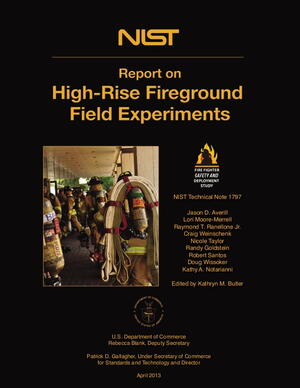
A new study was released on Wednesday by the National Institute of Standards and Technology (NIST), which drew a conclusion that firefighting crews of five or six members—instead of three or four—are significantly faster in putting out fires and completing search-and-rescue operations when responding to fires in high-rise buildings. Thomas Wieczorek, Director of the ICMA’s Center for Public Safety Management, noted that the NIST studies point the need to evaluate risks, hazards, and likely outcomes when deploying resources. “NFPA 1710 and NFPA 1720 both start with the premise that communities and their fire departments have conducted a comprehensive, all-hazard risk and hazard assessment. From that assessment, tasks for handling incidents can be determined and staffing models developed. The NIST study provides likely tasks that will be required on any high rise fire and communities should use it as a guide for determining what resources are deployed, how they are deployed and what outcomes are likely to result.” While much less frequent than house fires, about 43 high-rise fires occur in the United States every day, according to the NFPA. "Unlike most house fires, high-rise fires are high-hazard situations that pose unique operational challenges to fire service response. How big a fire gets and how much danger it poses to occupants and firefighters are largely determined by crew size and how personnel are deployed at the scene," says lead researcher Jason Averill, a NIST fire-protection engineer. "It's not simply that larger crews have more people. Larger crews are deployed differently and, as a result, are able to perform required tasks more quickly." The Report on High Rise Fireground Filed Experiments explores the outcome of the fireground experiments, funded by the FEMA Assistance to Firefighters Grants Program and conducted in a 13-story vacant high-rise office building in Crystal City, Va., with the support of local-area fire departments. The study involved 48 separate controlled experiments, plus 48 corresponding computer-modeling simulations, which evaluated three types of representative fires, from slow- to fast-growing. The report is the latest in a series of firefighter safety and deployment studies conducted by NIST, the International Association of Fire Fighters, and four other organizations, including the IAFC. In an analysis of 14 critical tasks, the study found that three-member crews took almost 12 minutes longer than crews of four, 21 minutes longer than crews of five and 23 minutes longer than crews of six to complete all tasks. Four-person crews took 9 minutes and 11 minutes longer than five- and six-member crews did, respectively. On the basis of the results of computer modeling, which incorporated data from live experimental burns, the study team concluded that smaller crews end up facing larger fires because of the additional time required to complete tasks. The study also looked at the effect of using fire service access elevators to move firefighters and equipment up to the staging floor and concluded that most tasks were started two to four minutes faster when using the elevators compared with using the stairs. "Rather than providing a one-size-fits-all answer, our study provides a scientific basis for discussions in communities as they consider matching resources deployed to their particular risk levels." says Averill. The study recommended more staff on each piece of equipment dispatched from separate station locations. It did not look at the possibility of smaller crew size on units staffed in the same facility with pre-determined and trained response protocols which would be an alternative service delivery model. The NIST study was cited on Wednesday by the union representing Chicago firefighters as a reason to not reduce crew sizes on equipment in the city as proposed by the mayor’s office.
